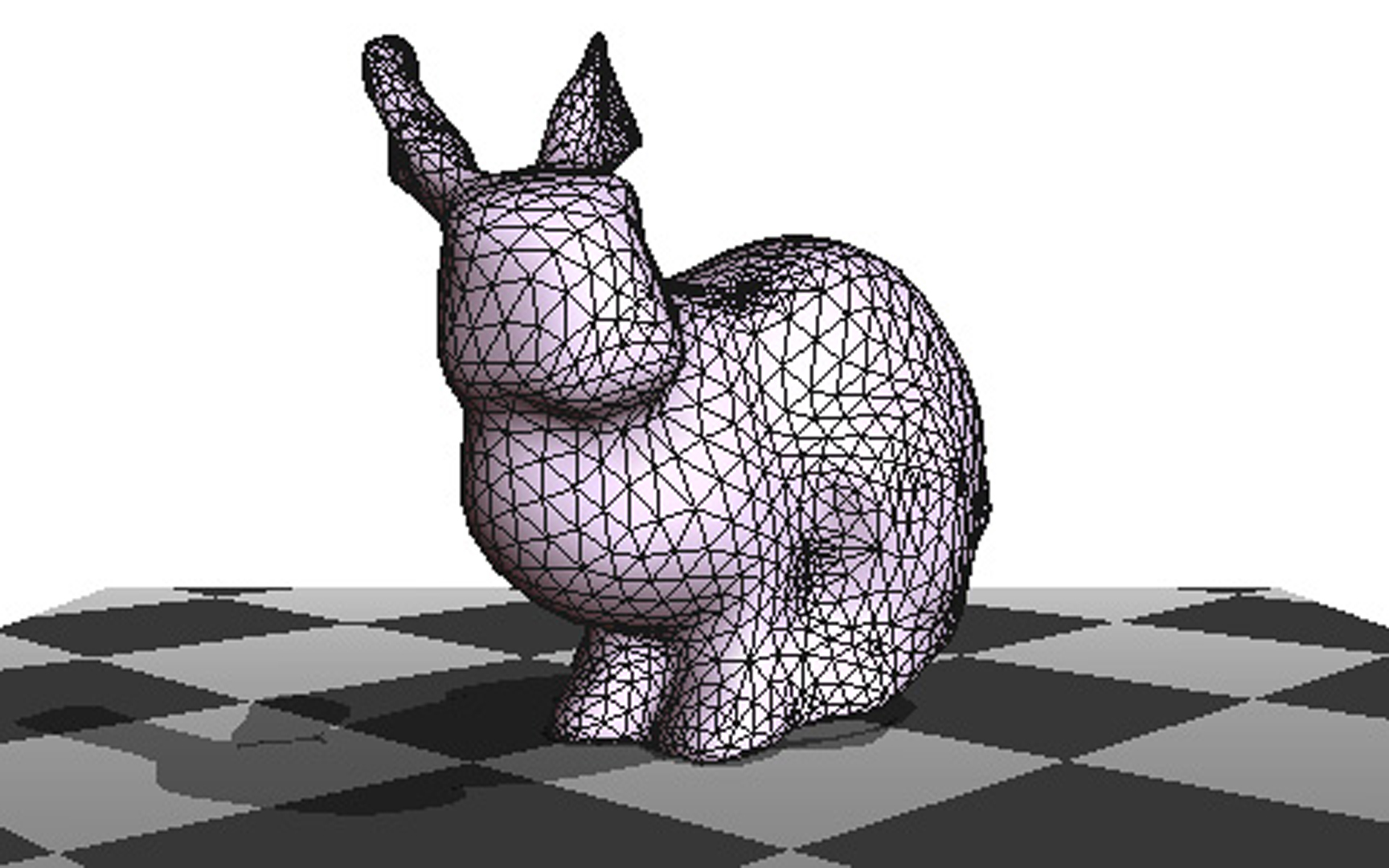“A simple geometric model for elastic deformations” by Chao, Pinkall, Sanan and Schröder
Conference:
Type(s):
Title:
- A simple geometric model for elastic deformations
Presenter(s)/Author(s):
Abstract:
We advocate a simple geometric model for elasticity: distance between the differential of a deformation and the rotation group. It comes with rigorous differential geometric underpinnings, both smooth and discrete, and is computationally almost as simple and efficient as linear elasticity. Owing to its geometric non-linearity, though, it does not suffer from the usual linearization artifacts. A material model with standard elastic moduli (Lamé parameters) falls out naturally, and a minimizer for static problems is easily augmented to construct a fully variational 2nd order time integrator. It has excellent conservation properties even for very coarse simulations, making it very robust.Our analysis was motivated by a number of heuristic, physics-like algorithms from geometry processing (editing, morphing, parameterization, and simulation). Starting with a continuous energy formulation and taking the underlying geometry into account, we simplify and accelerate these algorithms while avoiding common pitfalls. Through the connection with the Biot strain of mechanics, the intuition of previous work that these ideas are “like” elasticity is shown to be spot on.
References:
1. Benson, S., McInnes, L. C., Moré, J., Munson, T., and Sarich, J. 2007. TAO User Manual. Tech. Rep. ANL/MCS-TM-242 (Revision 1.9), Argonne National Laboratory.Google Scholar
2. Biot, M. A. 1938. Theory of Elasticity with Large Displacements and Rotations. In Proc. Fifth Int. Cong. Appl. Math., John Wiley & Sons, 117–122.Google Scholar
3. Botsch, M., Pauly, M., Gross, M., and Kobbelt, L. 2006. PriMo: Coupled Prisms for Intuitive Surface Modeling. In Proc. Symp. Geom. Proc., 11–20. Google ScholarDigital Library
4. Etzmuß, O., Keckeisen, M., and Straßer, W. 2003. A Fast Finite Element Solution for Cloth Modeling. In Proc. Pac. Graph., 244–251. Google ScholarDigital Library
5. Higham, N. J. 1986. Computing the Polar Decomposition—With Applications. SIAM J. Sci. Stat. Comp. 7, 4, 1160–1174. Google ScholarDigital Library
6. Irving, G., Teran, J., and Fedkiw, R. 2004. Invertible Finite Elements for Robust Simulation of Large Deformations. In Proc. Symp. Comp. Anim., 131–140. Google ScholarDigital Library
7. Kharevych, L., Weiwei, Tong, Y., Kanso, E., Marsden, J., Schröder, P., and Desbrun, M. 2006. Geometric, Variational Integrators for Computer Animation. In Proc. Symp. Comp. Anim., 43–52. Google ScholarDigital Library
8. Kikuuwe, R., Tabuchi, H., and Yamamoto, M. 2009. An Edge-based Computationally Efficient Formulation of Saint Venant-Kirchhoff Tetrahedral Finite Elements. ACM Trans. Graph. 28, 1, 1–13. Google ScholarDigital Library
9. Kilian, M., Mitra, N. J., and Pottmann, H. 2007. Geometric Modeling in Shape Space. ACM Trans. Graph. 26, 3, #64, 1–8. Google ScholarDigital Library
10. Liu, L., Zhang, L., Xu, Y., Gotsman, C., and Gortler, S. J. 2008. A Local/Global Approach to Mesh Parameterization. Comp. Graph. Forum 27, 5, 1495–1504.Google ScholarCross Ref
11. Marsden, J. E., and West, M. 2001. Discrete Mechanics and Variational Integrators. Acta Numerica, 10, 357–514.Google ScholarCross Ref
12. Meyer M., Desbrun, M., Schröder, P., and Barr, A. 2002. Discrete Differential-Geometry Operators for Triangulated 2-Manifolds. In Vis. Math. III. 35–57.Google Scholar
13. Müller, M., Dorsey, J., McMillan, L., Jagnow, R., and Cutler, B. 2002. Stable Real-Time Deformations. In Proc. Symp. Comp. Anim., 49–54. Google ScholarDigital Library
14. Müller, M., Heidelberger, B., Teschner, M., and Gross, M. 2005. Meshless Deformations Based on Shape Matching. ACM Trans. Graph. 24, 3, 471–478. Google ScholarDigital Library
15. Myronenko, A., and Song, X. 2009. On the Closed-Form Solution of the Rotation Matrix Arising in Computer Vision Problems. http://arxiv.org/abs/0904.1613v1, 4.Google Scholar
16. Pinkall, U., and Polthier, K. 1993. Computing Discrete Minimal Surfaces and Their Conjugates. Experiment. Math. 2, 1, 15–36.Google ScholarCross Ref
17. Rankin, C. C., and Brogan, F. A. 1986. An Element Independent Corotational Procedure for the Treatment of Large Rotations. ASME J. Press. Valve Techn. 108, 2, 165–174.Google Scholar
18. Schmedding, R., and Teschner, M. 2008. Inversion Handling for Stable Deformable Modeling. Vis. Comp. 24, 7–9 (CGI 2008 Special Issue), 625–633. Google ScholarDigital Library
19. Sorkine, O., and Alexa, M. 2007. As-rigid-as-possible Surface Modeling. In Proc. Symp. Geom. Proc., 109–116. Google ScholarDigital Library





